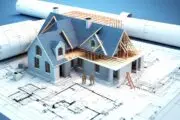Photo: James Bombales
The goal of home ownership — beyond the ‘keeping a roof over your head’ bit — is to make a return on your investment. You purchase a starter home in an up-and-coming neighborhood, live in it for at least five years, make a few upgrades, and voilà! You’ve got enough cash on hand to move into your forever home. We all want to sell our homes for the most money possible, but certain factors — or shall we say detractors — can lower your home’s resale value. Opendoor, an online real estate marketplace, analyzed data from actual home offers in 20 US housing markets between June 2018 and June 2019 to pinpoint the most costly culprits. Keep scrolling to find out if your home is at risk of devaluation.
1. Living next door to an unsightly commercial property, -$9,600
Your neighbors are Joe and Sue McDonald? That’s all well and good, they seem nice. A continually crowded McDonald’s drive-thru? Not so much. The irresistible smell of french fries might seem like a selling point, but it could slash your resale value by nearly $10,000.
2. Having a treacherously sloped backyard, -$7,000
Everyone dreams of a sprawling backyard where their dog can run with abandon or their kid can kick around a soccer ball. A sloped backyard, on the other hand, can pose safety risks and requires extensive landscaping to be made functional.
Photo: James Bombales
3. Dealing with a neighbor’s eyesore property, -$5,200
Even if you’ve invested in the curb appeal of your own home — adding potted plants and a couple patio chairs — your neighbor’s unmowed lawn and peeling exterior paint could negatively affect your final sale price. Unfortunately, there’s not much that can be done to remedy this factor, unless your neighbor is willing to accept some free yard work from a volunteer (yes, that means you).
4. Having inexpensive laminate or tile countertops, -$4,600
Laminate countertops are cheap, but they’re certainly not chic. While you may have chosen versatile Formica for its ease of maintenance and wallet-friendly price tag, the decision could come back to haunt you at closing time. Once popular in the 70s and 80s, tile countertops now have a dingey and dated appearance. Upgrade your kitchen countertops to durable quartz or beautiful butcher block to increase your return.
Photo by Francesca Tosolini on Unsplash
5. Bearing wall-to-wall carpeting, -$3,900
Carpet harbors dust and allergens, requires regular cleaning, and is more susceptible to changing design trends. As a home seller, you can usually get away with it in children’s bedrooms or a finished basement, but if carpet is used throughout your main floor, be prepared to knock down the price of your home.
6. Having carpet flooring in the master bedroom, -$3,800
Again, carpet is very much a personal choice. Some people crave the warmth and comfort it provides underfoot, while others, especially those who live in humid climates, think of it as a breeding ground for mold. As a home seller, you want to appeal to the widest audience, and in 2019, most buyers favor hardwood flooring.
Photo: James Bombales
7. Residing on a street with a high traffic volume, -$3,800
When you live in a busy area, finding parking for your guests is a total crapshoot, crossing the street is like playing a game of chicken, and traffic noises can keep you up at night. But hey, being within walking distance of bars and restaurants might be well worth it. For families with young children, though, the frenzy of activity could be a total dealbreaker.
8. Possessing low-quality kitchen cabinetry, -$3,000
If you’ve ever lived in a rental apartment, you’re probably familiar with particle board cabinetry. It’s cheap, which is why landlords love it, and is prone to warping, water damage and peeling. Cabinets are expensive to replace, or even reface, so a potential buyer may pass on a home that would require significant kitchen upgrades.
Photo by Chris Yang on Unsplash
9. Living in close proximity to power lines, -$2,700
Despite scientific evidence that proves otherwise, many people falsely believe that living near high voltage power lines causes cancer. Others simply see them as an eyesore and would prefer to live in a neighborhood where power lines have been buried. Again, this is a factor that may lower your home’s value, but it’s not something you can change.
10. Having a characterless, unlandscaped backyard, -$2,600
A useable outdoor space adds square footage to your property. Prospective buyers might picture themselves dining alfresco on a stone patio or hosting a backyard movie night under the stars. If your backyard is unkempt and unlandscaped, those dreams are dashed.
Photo by Ferdinand Stöhr on Unsplash
11. Living at the top of a sloped driveway, -$2,400
A sloped driveway can lead to a slew of problems: Rainwater drainage issues, cracks in the pavement, scraping under your vehicle, and slippery conditions during inclimate weather. It’s not ideal for families, either — kids can’t easily ride their bikes or draw with chalk on an incline.
12. Working with outdated kitchen cabinets, -$2,100
Honey oak cabinets are a telltale sign of a 90s kitchen. Fortunately, they can be painted over, but some buyers are reluctant to purchase a home that isn’t turnkey. Before listing your home on the market, it’s a good idea to give those dated cabinets a fresh coat of white paint and swap out the hardware for something sleek and minimal.
Photo: James Bombales
13. Having (gasp!) black or white appliances, -$2,000
As a nation, we are obsessed with stainless steel appliances. There’s no compelling reason for this — black and white appliances function just as well, but stainless steel has become the de facto upgrade for modern kitchens. With a $2,000 devaluation, in this case it’s probably better to cut your losses than splurge on a stainless steel appliance package worth the same amount, if not more.













